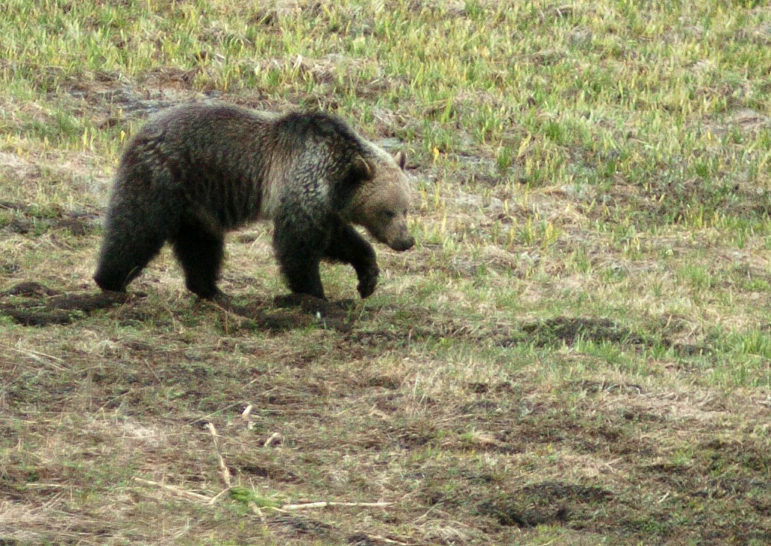
MAMMOTH HOT SPRINGS, WYO. — For years, many conservationists have worried what grizzly bears in the greater Yellowstone ecosystem will eat as changing climate and habitat conditions bring fewer whitebark pine nuts, cutthroat trout and other prime food sources. A recent study offers an answer: almost anything else.
Research by several state and federal wildlife biologists found that grizzlies across the Yellowstone area eat a total of 266 different species of plants and animals, and display an amazingly adaptable diet that ranges from moths to algae.
Kerry Gunther, who leads Yellowstone National Park’s bear management program, said grizzly bears are “remarkable generalists,” adept at switching food sources based on what’s available.
Because of that dietary “plasticity,” Gunther said, the grizzly bear is “really not a good poster child for a species that could be significantly impacted by climate change.”
Gunther presented the findings of the study earlier this month at Mammoth Hot Springs during the 12th Biennial Scientific Conference on the Greater Yellowstone Ecosystem.
Unlike white-tailed jackrabbits or wolverines, which thrive only in specific climate zones, grizzlies can more easily move up or down through different elevations to time their seasonal feeding with the best available foods, Gunther said.
The study looked at data collected from more than 175 sources from 1943-2009, including analysis of more than 11,000 grizzly bear scat samples.
When given the chance, bears will self-select a diet to maximize weight gain, preferring a mix of about 17 percent protein to 83 percent fats and carbohydrates, Gunther said.
Bears most commonly feed on grasses, sedges and ants, but draw more caloric energy from favorite foods like berries, trout, bison, elk and small mammals.
Whitebark pine nuts are an energy-dense food source that have been cited in numerous legal filings as part of the ongoing dispute over removing federal protections for grizzlies.
But Gunther said that 28 percent of the radio-collard bears he has been studying currently have no whitebark pine trees in their home range.
Cutthroat trout numbers in Yellowstone Lake had been sharply declining in past years before recent efforts to restore the native fish.
The cutthroat trout is important to many species in Yellowstone, but only a small fraction of grizzlies have home ranges adjacent to Yellowstone Lake. Looking back on several decades of data, the fish were “never really a big proportion of food for grizzly bears in the Yellowstone ecosystem,” Gunther said.
Some bears across the region don’t have access to any elk, and most bears outside Yellowstone will never feed on bison, despite the importance of both of those large mammals to the diets of many grizzlies.
The biggest change in grizzly diets over the past few decades came when garbage dumps inside Yellowstone were closed, shutting off a favorite food source for the bears. Grizzlies in the park switched to eating more broadleaf, flowering plants like dandelions, Gunther said.
Knowing what bears eat and learning more about their dietary adaptability is important because 17 different agencies manage their habitat across the ecosystem, Gunther said.
It’s unlikely Gunther’s research will settle questions about the role of diet and food sources in the ongoing legal disputes over federal protections for grizzlies.
But it has certainly proven eye-opening for seasoned biologists who thought they pretty much knew what grizzly bears ate.
“We all knew they ate a lot of different things,” Gunther said. “But they ate a lot more than we even imagined.”
Contact Ruffin Prevost at 307-213-9818 or [email protected].

Excellent report. No wonder grizzly bears are thriving.
Thanks for sharing this great research! Sounds like with adequate space and habitat in which to maneuver, the food will be found.